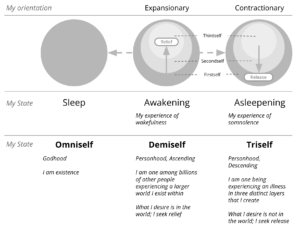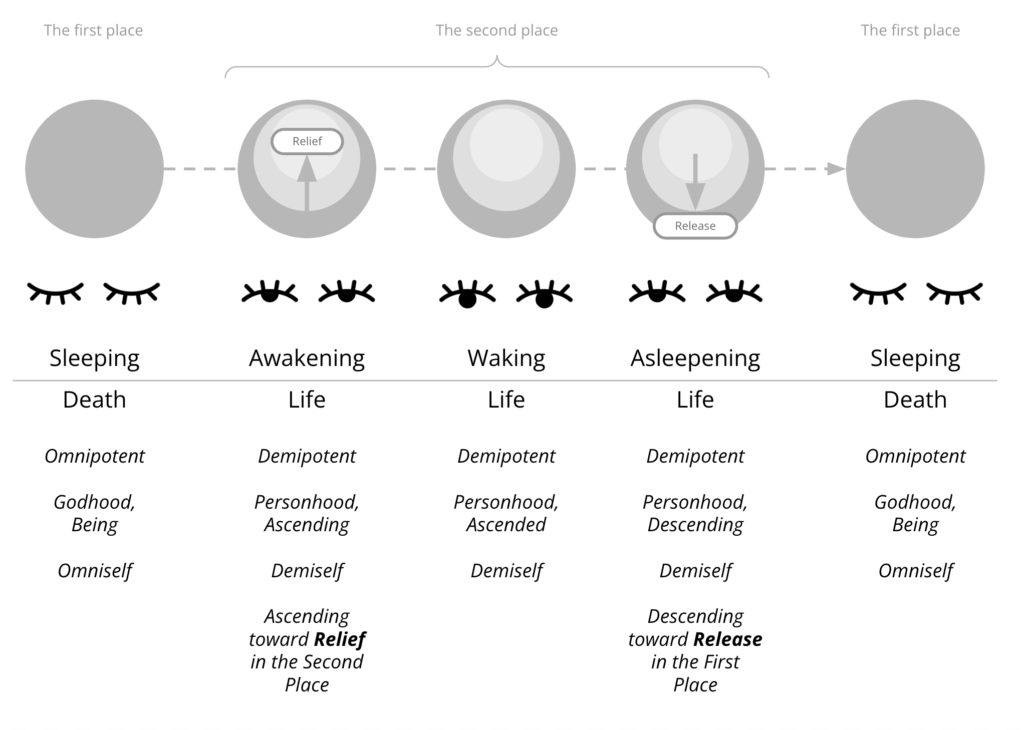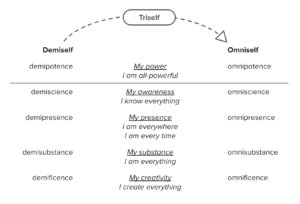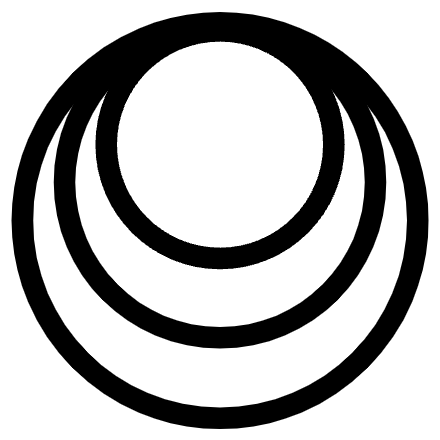I have formalized a new model that synthesizes years of contemplation into a single, efficient framework. It starts with a single, unifying mission:
The purpose of the selfist model is to facilitate the movement from personhood to godhood.
Before I can make use of the selfist model, I must achieve several realizations:
- I desire. My most elementary state is desire. My desire is a constant in my moment, ebbing and flowing.
- I desire relief from desire. My desire is to relieve my desire temporarily.
- What I desire is not in the second place. What I believe will satiate my desire, does not in truth accomplish that. It only temporarily satisfies my desire.
- What I desire is in the first place. There is a way to satisfy my desire permanently. Everything I ever wanted or could want is in the first place, not the second place.
- I desire release from desire. My desire seeks its own permanent end. My desire is to satiate my desire completely.
- I desire to return to the first place. I can find release through recovery.
Once I have achieved these realizations, I can begin my recovery. The new model systematically answers the “how” by laying out a structured path for answering all questions and cultivating the conviction I need to complete my journey. Every insight and revelation I have ever had, and which has withstood the test of time and contemplation, can fit neatly into the new model.
The first diagram lays out the major states of my existence in three stages:
- Stage 1 – Sleep, Omniself, Godhood
- Stage 2 – Awakening, Demiself, Personhood ascending
- Stage 3 – Asleepening, Triself, Personhood descending
These stages do not all intuitively align without effort because these concepts are thought to be different. But with some effort at exposing and letting go of persistent mistruths, their essential alignment becomes apparent.

What I experience as “life” is the seemingly cyclical and repeated movement through a predictable series of states. The foundational cycle is my daily progression from the state of sleep, through awakening and wakefulness, and then asleepening until I have returned to sleep again. This is broken out in the diagram below.

The model reveals that sleep, death, firstself, the first place, and omniself are all the same thing: godhood.
It also shows that waking, life, secondself, thirdself, the second place, demiself, and triself are all the same thing: personhood.
The proliferation of confusion is the first obstacle I must overcome to begin my journey back to godhood. In keeping with the foundational principle of the Selfist model — that the truth can be practically and directly experienced in my moment — I only have to learn how to express what I see and understand the significance of what I am seeing. My everyday language and convictions conceal and obscure these truths. What is important is made mundane, routine, and unworthy of examination; while what is trivial is made extraordinary and meaningful.
The journey to rediscovering my omnipotence is the journey from demiself to omniself. The distance between the two is great, so I need a transitional phase called triself.

My objective is to answer the question “who am I?” and believe the answer I discover. In triself, I rediscover and reclaim my omnipotence in four dimensions:
- My awareness – What do I know?
- My presence – Where am I in time and space?
- My substance – What am I?
- My creativity – What can I do?
My progress in these dimensions is a matter of conviction. On one end are my demipotent convictions:
- I am demiscient: I do not know everything. I believe there are many things that I do not know.
- I am demipresent: I am not everywhere, at every time. I believe there are many places and times other than my own.
- I am demisubstant: I am not everything. I believe there are many things that are not me.
- I am demificent: I did not create everything. I believe there are many things that I did not create.
And on the other end of my recovery are my omnipotent convictions:
- I am omniscient: I know everything. I understand the nature of knowledge, and I know there is nothing beyond my own knowing.
- I am omnipresent: I am everywhere, at every time. I understand the nature of space and time, and I know there are no other places or times beyond my own moment.
- I am omnisubstant: I am everything. I understand the nature of the world and my experience, and I know that it is all me.
- I am omnificent: I create everything. I understand the nature of creation, and I know that I am the creator.
Firstly, these convictions require my desire to fulfill. And then with considerable effort, I must transform my conviction from demipotent to omnipotent. Upon attaining my omnipotence, I can end my illness by ending my desire.
…
